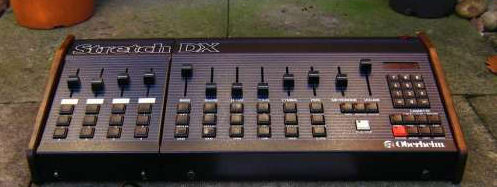Sysex Vst Plugin

Quick Haas is a free and simple psychoacoustic panning plugin, available as a Windows VST or mac Audio Unit. The ‘Haas Effect’, also known as the precedence effect, is a psychoacoustic effect where listeners can perceive the special position of an audio signal depending on very small delays between the left and right channels of the audio. Want to use some of the comprehensive FX plug-ins that REAPER provides, but stuck in another host? Haven't made the switch yet? /200-best-free-vst.html. Fear not - you can download ReaPlugs, a package of FX that includes many of the plug-ins that come with REAPER, for free!
- the only VST plug-ins in question are editors like ctrl which request such sysex data from a hardware unit.i cant test now but i believe they do the same what most hardware also does, and receive sysex in omni mode. and those who dont, probably listen for it on channel 1.so you should be fine using 'midievent 144', then attach the sysex string.
- Thanks Roman for the quick response. Let me tell you what I'm trying to do. I am building a patch that allows users to build, edit, and transmit alternate tuning scales to external devices. I also want the patch to work with vst's that support the midi tuning standard sysex messages. I am using Ivory 2, because it supports MIDI real-time sysex single note tuning messages per the midi spec. It works fine when running Cantabile, which is a standalone app for hosting Ivory 2. But it does not work when loading Ivory 2 as a vst~ in Max.I don't think that a note-on channel message like midievent 144 should make a difference, as the sysex messages come through the sysexin object, not the midiin object. I tried prepending the midievent 144 message to the sysex message in many ways to no avail. I cannot make this work either with the vst~ and the sysex generator in the same patch, or with the sysex generator and vst~ in different apps connected by internal midi ports. I think I should try it with some other vst host. Unfortunately, my go-to vst host (Ableton Live 9) does not support sysex. So I am limited in my testing. Perhaps I can try it in Vienna Ensemble Pro.If anyone knows how to get a vst~ instrument to respond to sysex messages, please let me know. If it is not possible, it would be good to know that as well.Thank you all. This is an amazing resource for so many of us!
- Just a guess: Have you tried just sending sys-ex messages as plain ol' lists?
- ah, tuning tables, right. some NI also support this for like 10 years.if i am not wrong, the 'midievent' message has only been there to distinguish between parameter 144 or preset 144 and midi channel 1. if vst~ actually supports VST3 it should support sysex. or like someone once put it: sysex .. is midi.
- Bill, I tried that first. No luck. Roman, I have only tried with VST2 - nothing. I will try tomorrow with VST3. Thanks!
- midi event 144 is status byte for note on message on channel 1.Why would you expect it to route sysex messages to any destination ?If it were possible to pass sysex to max vst~object/plugin,it would work only if it accepted standard sysex messages,starting with 240 and ending with 247 decimal.
- my weird assumption was based on the fact that many hardware synths receive sysex in omni mode.however, the max 7 vst reference recommends against it, it notes that only 2 arguments for the incoming list are allowed (and a third might be used for midi microtuning)so any kind of 'x90 xF0 .. ' will not work there (even if it is allow in midi, which i dont know.and otoh, if vst~ woud take sysex, it would probably also need use some keyword like 'midievent', because '240 something' would change parameter 240 otherwise.

Gig Performer is a cross-platform (Mac/Windows) audio plugin host for both live performance and session musicians (keyboard players, guitarists, singers, drummers, FOH engineers) looking for an intuitive fast and flexible VST/VST3/AU plugin hosting environment for their software synths and effects.
Vst Plugin Free
A hands-on, simple desktop musicians friend, inspired by synthesizers of the seventies and eighties: produces original synth tones and reproduces strings pianos, basses, organs and bells patches with ease, but it can also explore wild and spacey atmos using its flexible modulation options and smart programming.
- Controllable powerful LFO with selectable Square, Ramp/Saw, Sinus waveforms, positive and negative modulation options on oscillators and filter, linear attack and release modulation times.
- User mixable waveforms for additive synthesis as in original seventies synthesizers: square, saw, sub (-12,-24,-36 transpose options) with 3 waveforms selection: square, saw or sine, plus brown noise generator, level sliders each.
- 24db LowPass filter for powerful subtractive synthesis, natural resonance, controllable via MIDI, 4-stage envelope, polyphonic keytrack and LFO modulation section.
- 4-stage full linear envelope to control oscillators and filter section, switchable modes for flexible amplification via an auxiliary gate or using the modulation section times.